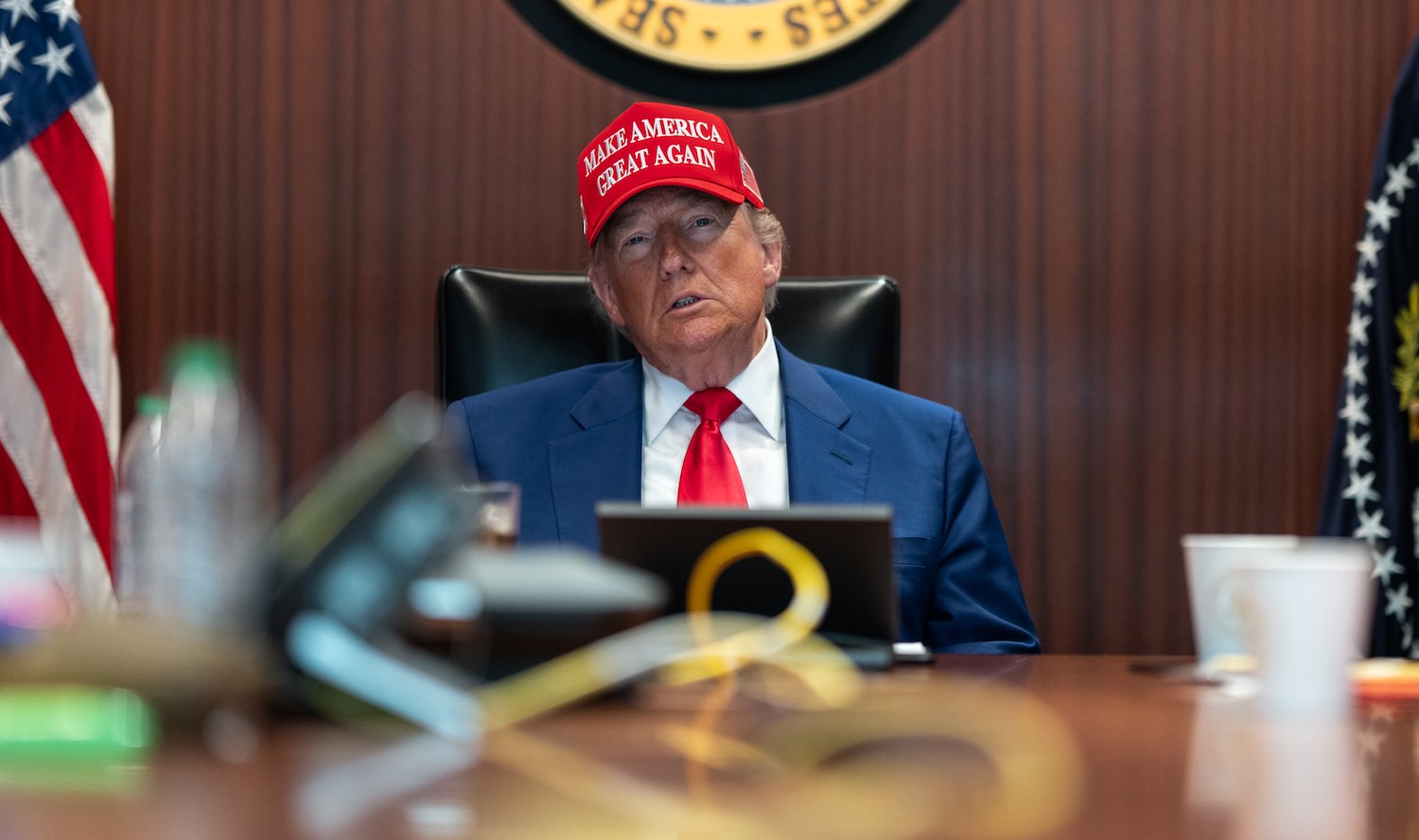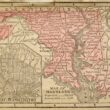Trump has begun planning to invoke the Insurrection Act. Here’s how he could turn America’s military into a new domestic nationwide policing force.
On June 7, 2025, President Donald J. Trump ordered the federalization of 2,000 members of the California National Guard under 10 U.S.C. § 12406, citing what he called an “unlawful rebellion” in Los Angeles. Within 48 hours, California filed suit. Though Trump framed it as a defensive move to support immigration enforcement, it marked the first time since Richard Nixon’s 1970 postal strike intervention that a president had federalized the Guard without a governor’s request.
It is not likely to be the last. On June 18, Defense Secretary Pete Hegseth told the Senate Armed Services Committee that the Pentagon “has contingency plans to deploy additional troops inside the U.S.” to support federal law enforcement in cities like Los Angeles. He described the military as critical to domestic security and framed its use in policing as both necessary and appropriate.
Already, Trump’s moves have systematically dismantled key institutional guardrails. Military lawyers in the Pentagon have been sidelined when they questioned unlawful orders; numerous DOJ career officials refused to participate in directives they claimed violated constitutional limits. That centralization of power—the consolidation of executive authority over legal, national security, and military branches—creates a pathway toward deploying a domestically compliant armed force, eliminating accountability and edging toward unfettered authoritarian rule.
Nearly two months ago, on April 28, Trump issued an executive order directing his cabinet to prepare a plan for using military assets in “support” of domestic law enforcement, with a deadline of July 27. In this context, his California move looks less like improvisation than rehearsal. The question now is: what would justify a formal invocation of the Insurrection Act under 10 U.S.C. §§ 252–254, with its far broader authority?
Legally, the statute allows the president to deploy federal troops to suppress “any insurrection, domestic violence, unlawful combination, or conspiracy” that makes it “impracticable” to enforce federal law by the ordinary course of judicial proceedings. It also authorizes intervention if any part of the country is deprived of constitutional rights and local authorities cannot or will not protect them. Historically, its use has been rare and often contested. In this administration, its use would be something else entirely: a political weapon.
What, then, could trigger it?
Retaliation on U.S. Soil Following a Strike on Iran
In the wake of Trump’s decision to carry out initial military strikes against Iran’s nuclear facilities on June 21, Iran has warned of unspecified “consequences,” stated that it has every right to retaliate, but has not yet acted. Its capacity to do so is well-known, and has included prior assassination plots, cyber-disruptions, and the use of proxies against American assets in the Persian Gulf and beyond.
In the past, such threats did not have domestic political implications. But in the current moment, a low-scale domestic attack by Iran—a bombing, cyber disruption, or even sabotage with alleged Iranian sponsorship—could be cast by Trump as an “invasion” under § 252, or as a “rebellion” with foreign support. In such a moment, civil liberties could be overridden in the name of national defense, and dissent could be rebranded as complicity.
The statutory fit would be tenuous. But the political fit would be perfect.
Anti-War Protests Turn Violent
Should protests erupt here at home following U.S. strikes against Iran, over U.S. policy towards Gaza, or any other controversial action, the administration may look for violence on the margins—a rock thrown, a fire set, a lone act of sabotage even tenuously linked to leftist extremism—to reframe isolated dissent as full-scale rebellion. Under § 253, the president can act where “domestic violence” impedes law enforcement. If federal agents— even masked and hooded ICE contractors engaging in an unlawful snatch of a U.S. citizen who they claim is an illegal immigrant—are attacked during a protest, that alone might suffice.
Trump does not need a mass uprising. He needs one arrest, one injury, one catalyst, one dark dramatic moment caught on camera.
Continuing State-Level Resistance to Federal Immigration Enforcement
California’s lawsuit against Trump’s use of § 12406 lays out the legal battleground. Filed on June 9, the complaint argues that:
- The president bypassed the legal requirement to coordinate with the state’s governor.
- None of the pre-requisites for use of §12406 existed: there was no invasion, rebellion, or failure of state law enforcement.
- Federalizing 4,000 Guard members deprived the state of vital resources during wildfire season.
- The federal action violated the Tenth Amendment (which reserves law enforcement powers to the states), the Posse Comitatus Act (which generally bars the use of the military for domestic purposes), and the Administrative Procedure Act (as the president acted unlawfully by using power in a manner that was arbitrary and capricious).
The complaint is clear: federalizing the Guard without a factual or legal basis amounts to usurpation. The Trump administration’s response has been equally clear: the president is Commander in Chief, Congress has authorized him to act by granting a President this power under the Insurrection Act, and his judgment cannot be second-guessed.
Such arguments amount to a doctrine of presidential infallibility.
Preparing for a Manufactured Emergency
Trump’s April 28 executive order, “Strengthening and Unleashing America’s Law Enforcement to Pursue Criminals and Protect Innocent Citizens,” directs the Secretaries of Defense and Homeland Security, along with the Attorney General, to develop a unified strategy to support federal, state, and local law enforcement using military and other national security assets “to prevent crime.” These three agencies—DOD, DHS, and DOJ—together control the full spectrum of American coercive power: military force, domestic policing, immigration enforcement, and federal prosecution. Under constitutional norms, the Defense Department is barred from acting on U.S. soil except in cases of invasion, rebellion, or insurrection. This order would instead lay the groundwork for something else: not an improvisation, but a blueprint—an architecture in which the military is present whenever the president deems it necessary to enforce his will against whomever he chooses to target.
Trump characterized his deployment of the National Guard—and the Marines— in Los Angeles as needed to stop interference with deportations, and therefore “a form of rebellion against the authority of the government of the United States.” His lawyers cited images of burning cars and crowds blocking the movement of ICE agents as a response to an emergency. Once the operational framework is in place, Trump won’t need a genuine emergency—just a politically useful one. A violent crime by a noncitizen, a viral protest clip, a claim of domestic extremism: any of these could serve as an excuse. The line between threat and theater would vanish altogether.
If Trump seeks confrontation, it will not be because the moment demands it. It will be because the optics permit it.
The Legal Landscape Ahead
If Trump invokes the Insurrection Act under § 252 or § 253, the central legal question will be which precedent will guide the courts: Martin v. Mott (1827), which granted presidents broad discretion to determine when to call out the militia, or Sterling v. Constantin (1932), which reaffirmed the judiciary’s authority to assess whether a president’s factual claims justify emergency action.
In Sterling, the Court held:
“What are the allowable limits of military discretion, and whether or not they have been overstepped in a particular case, are judicial questions… But we are clearly of opinion that, in all of these cases, the danger must be immediate and impending; or the necessity urgent for the public service, such as will not admit of delay… It is the emergency that gives the right, and the emergency must be shown to exist before the taking can be justified.”
This principle—factual necessity subject to judicial review—remains the strongest legal safeguard against an unchecked presidency.
Additional precedents such as Printz v. United States (1997), Youngstown Sheet & Tube v. Sawyer (1952), and United States v. California (9th Cir. 2019), which upheld limits on federal efforts to commandeer state resources for immigration enforcement, may support challenges to Trump’s actions in specific contexts. But it is Sterling that goes to the heart of the matter.
Already, the first California case is moving through the courts—with mixed results. On June 12, U.S. District Judge Charles Breyer ruled Trump’s federalization of the National Guard unlawful, finding insufficient evidence of a rebellion or of federal inability to enforce immigration law through normal means. He cited Laird v. Tatum, 408 U.S. 1, 15–16 (1972), affirming that federal courts are “fully empowered” to consider claims of injury from unlawful domestic military use.
But on June 19, a three-judge panel of the Ninth Circuit stayed Breyer’s temporary restraining order. The panel acknowledged that courts may review presidential decisions regarding domestic military deployment but emphasized the need to grant wide deference to executive judgment. It found the administration had offered enough evidence to support its claim that federal immigration efforts were being obstructed—subject to further fact-finding in the trial court.
Notably, two of the appellate judges were appointed by Trump, one by Biden. Further proceedings before Breyer—and further appeals—are inevitable.
The Constitutional Stakes
When Trump declared in his June 7 memorandum that protests against ICE operations constituted a “rebellion against the authority of the United States,” he was not just redefining those words from the federal statute defining insurrection –18 U.S. Code § 2383. He was redefining democracy.
The events in Los Angeles involved 44 arrests, several hundred protesters, and one detained union leader. Local police responded effectively, and both LAPD and LASD coordinated with federal agents when asked. Yet the administration claimed the situation was out of control.
This is the essence of what California’s lawsuit calls “a power grab” under false pretenses. If the courts allow it, the precedent won’t be a military used in extremis. It will become a military on standby for the next protest. A finding by the Supreme Court that Trump had the power to do what he did based on the facts he asserted would pave the way for his invocation of the Insurrection Act, which does not require approval from Congress. Once invoked, the Act overrides state governors. It authorizes the deployment of active-duty troops on U.S. soil. It invites the expansion of surveillance, detentions, and military-civilian command structures far beyond what the Framers envisioned.
More than that, such an invocation—by this President, at this time—would follow a pattern: ICE detentions, handcuffing, and, in some cases, the arrests or indictments of popularly elected state and federal officials. First came a judge. Then came physical violence by federal agents against public officials—including U.S. Senator Alex Padilla (DCA), Newark Mayor Ras Baraka, Rep. Bonnie Watson Coleman (DNJ), and New York City Comptroller Brad Lander. Each action marks a shift from legal governance to muscular symbolism. The soldier becomes the enforcer of presidential will against the country’s own people.
Information Gathering and the Privacy Line
If the military is to assist in domestic law enforcement, it will inevitably require access to information about U.S. citizens. That means surveillance—electronic, digital, and physical. The Pentagon, DHS, and DOJ already possess vast intelligence capabilities designed to counter foreign threats, but not to monitor domestic dissent. Repurposing these tools for internal use risks violating constitutional protections and the Privacy Act of 1974, which restricts the federal government’s collection and use of personal information on Americans without cause. Under the logic of Trump’s April executive order, coordination between military and intelligence agencies could bypass traditional legal safeguards—eroding the line between national defense and domestic policing, and redefining political opposition as a potential security threat.
The administration has already moved in this direction. A March executive order eliminated “unnecessary barriers” to inter-agency data sharing and facilitated expanded contracts with Palantir Technologies, the data analytics company founded by Peter Thiel, whose Foundry and Gotham platforms are now fusing government databases across DHS, the IRS, SSA, and other agencies. The result is an emerging “mega-database” of Americans’ tax filings, benefit claims, immigration records, and more—assembled without meaningful public notice or transparency. Privacy advocates have warned that this consolidation enables targeted enforcement against disfavored individuals or groups. Legal challenges are being prepared, but the architecture is already in place.
This data infrastructure further raises the stakes if Trump invokes the Insurrection Act. With military forces deployed domestically and with unprecedented access to personal data, the federal government could swiftly identify, monitor, and pursue individuals based not on criminal conduct, but on the president’s political objectives. The fusion of emergency powers and surveillance capacity risks transforming national defense into an instrument of selective repression—turning state power against the public itself.
July 27 and Beyond
When the president’s cabinet delivers its plan under the April 28 order, the American public will see what military support for law enforcement now means. Will it mean deploying troops to cities where protests might occur? Will Guard troops be embedded with ICE? In some future election period, could it include armored vehicles rolling through neighborhoods that have previously voted the wrong way, or military personnel stationed outside polling places “to ensure public safety?”
If so, then the domestic war footing foreshadowed in Los Angeles may be extended elsewhere: San Francisco. Chicago. New York. Any place that resists—or simply disagrees. Perhaps just any area that voted blue in the 2024 election.
The Constitution allows for emergency power. But it does not authorize the permanent use of military force to police political disagreement.
We are not in a state of insurrection. But the president appears eager to manufacture one.
Even as five million people gathered across the United States, the June 14 “No Kings” protests stayed peaceful. That mattered. Because Trump doesn’t need a rebellion. Just a pretext.
He is watching and he is waiting, searching for the trigger.
Jonathan M. Winer, a former senior State Department official, is a member of The Steady State. The Steady State is a nonpartisan organization of more than 280 former senior national security professionals from the CIA, FBI, Department of State, Department of Defense and Department of Homeland Security which advocates for constitutional democracy, the rule of law and the preservation of America’s national security institutions.







0 Comments